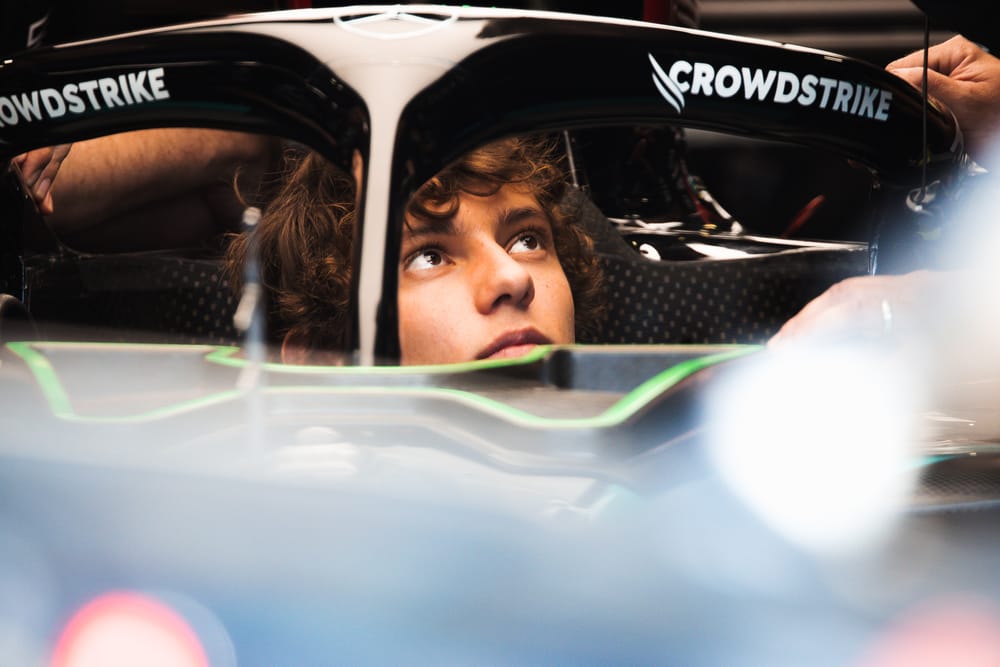Up Next

Kimi Antonelli’s hotly anticipated official Formula 1 debut started with him briefly sitting atop the times and ended dramatically with a heavily damaged Mercedes in the wall and five laps to his name.
The unexpectedly truncated Italian Grand Prix FP1 for Mercedes’ expected 2025 race driver comprised just two outlaps, an inlap, and a little short of two flying laps because of his big crash at Parabolica.
Antonelli into the wall! 💥
— Formula 1 (@F1) August 30, 2024
It's a high-speed spin into the barrier at Parabolica for the youngster, who reports over the radio that he's OK.
The red flags are out 🔴#F1 #ItalianGP pic.twitter.com/aQQQPqjaeb
Which amounts to an unexpectedly strong demonstration of both the risk and reward that comes with throwing such a young and still inexperienced driver into one of the biggest teams in F1 as replacement for the most successful F1 driver of all-time – as Mercedes is still expected to do next season.
The crash changes nothing.
“Most important is to hire based on ability and an FP1 that’s gone wrong is not a reason why you decide for or against a driver," said Mercedes boss Toto Wolff.
First, the potential reward. A confident, well-prepared 18-year-old with bags of ability and a huge upside. His very first flying lap reflected both his speed and his extensive work testing F1 machinery in private.
It’s a fun footnote that he was briefly P1, as is Lewis Hamilton needing a second push lap to get ahead of him, but positions are irrelevant that early in practice and it was how Antonelli was immediately comfortable attacking the braking zones and hustling the car into the corner that really stood out.
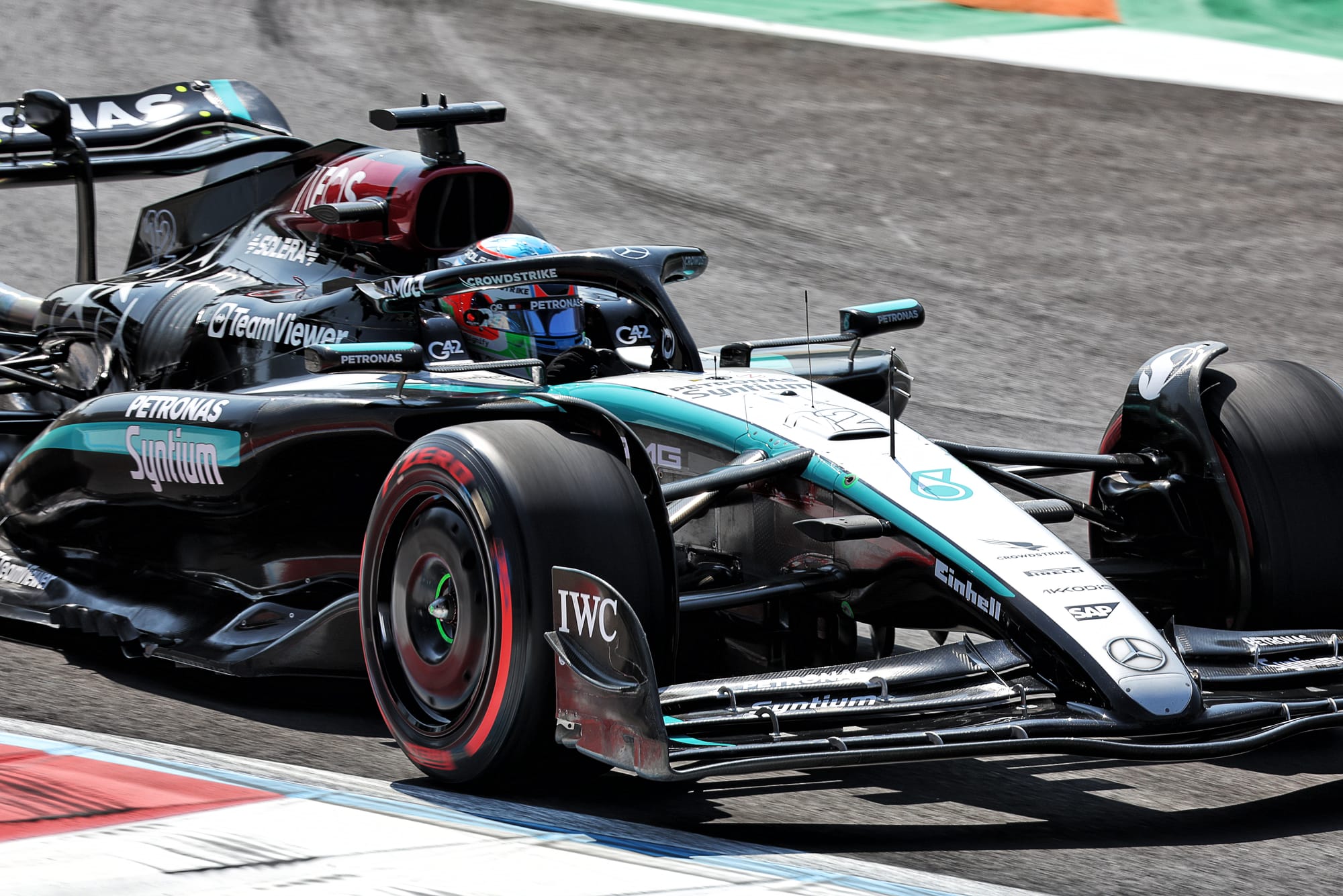
But then, the risk. His enthusiasm rapidly proved his undoing.
Coming to the end of a second push lap – after a brief trip back into the pits – that was about to re-establish Antonelli at the head of the order, he did what teams dread most of young drivers: got overambitious and had a sudden loss of control and a helpless trip across the gravel into the wall. Hard, with a 45G impact.
“It’s unfortunate,” Wolff admitted.
“But that’s what we’ve always said: he’s a rookie, he’s very young, we’re prepared to invest.
“These moments will happen and will continue to happen next year. But there will also be a lot of highlights.
“What we’ve seen today is we’d rather have a problem slowing him down than making him faster but what we saw in 1.5 laps is astonishing.”
The apology came quickly, and rightly so given it gave Mercedes a big job to rebuild George Russell's car in time for FP2. “This is what you need to do when you bring a car back that’s like a Lego box falling on the floor,” Wolff joked.
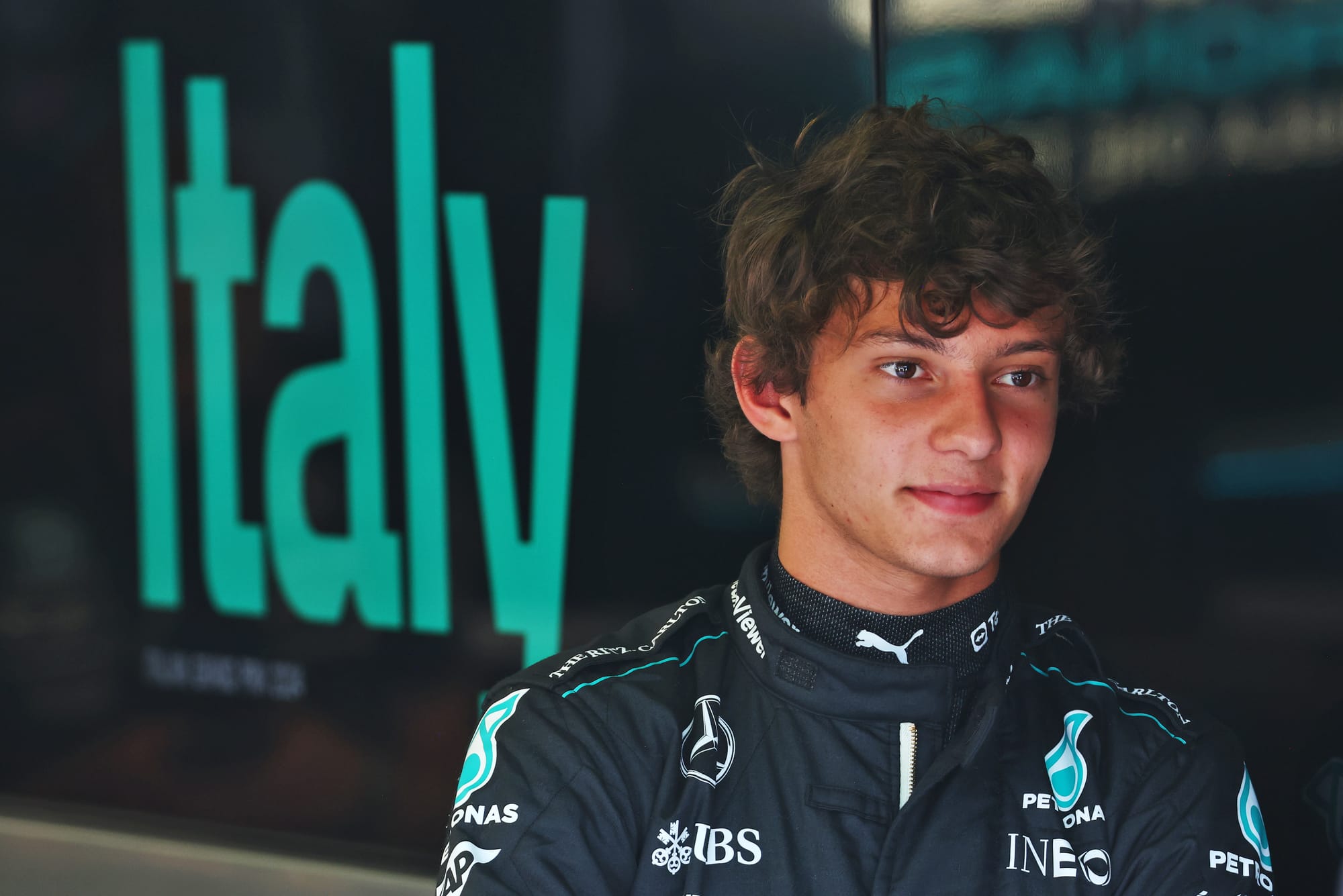
Antonelli is young, but highly rated, and a mistake like this is usually the worst thing a driver can do on a stand-in FP1 appearance. ‘Don’t crash’ is often what teams impress upon rookies (although on this occasion Wolff told him to enjoy it), and a shunt like this on a second flying lap is unnecessary - and was driver error.
Antonelli called it "a mistake on my side, pushing a bit too much for the conditions and I should have built the run a bit more progressively".
It looked slightly strange at the time but has a simple explanation: Antonelli went into the corner too fast. He seemed to get the front in fine but closer to the apex the rear suddenly let go. It had the hallmarks of taking in a little too much speed with tyres that couldn’t keep up at the end of the lap after the high speed Ascari chicane, especially on a hot day and a new track surface that is radiating heat slightly more than would be normal.
A look at some primitive data backs that up. Antonelli seems to have stayed on the throttle and braked around 30 metres later than on his first attempt – so much later, in fact, it looks like he actually braked slightly later than Hamilton eventually did for his outright fastest lap in the entire session.
Although Antonelli was lifting into braking on those early fliers (whereas Hamilton, as would be expected, was coming off the throttle immediately onto the brakes), his speed on entry was still considerably greater – probably around 20-30km/h higher than the first lap.
“What he tried to do the car can’t take,” said Wolff, who added that Antonelli “said he felt so much confidence, the car was good, and I guess he was just bitten”.
Mercedes was well aware that mishaps like this would not just be possible along the journey with an exciting, capable but still raw talent, they would be likely.
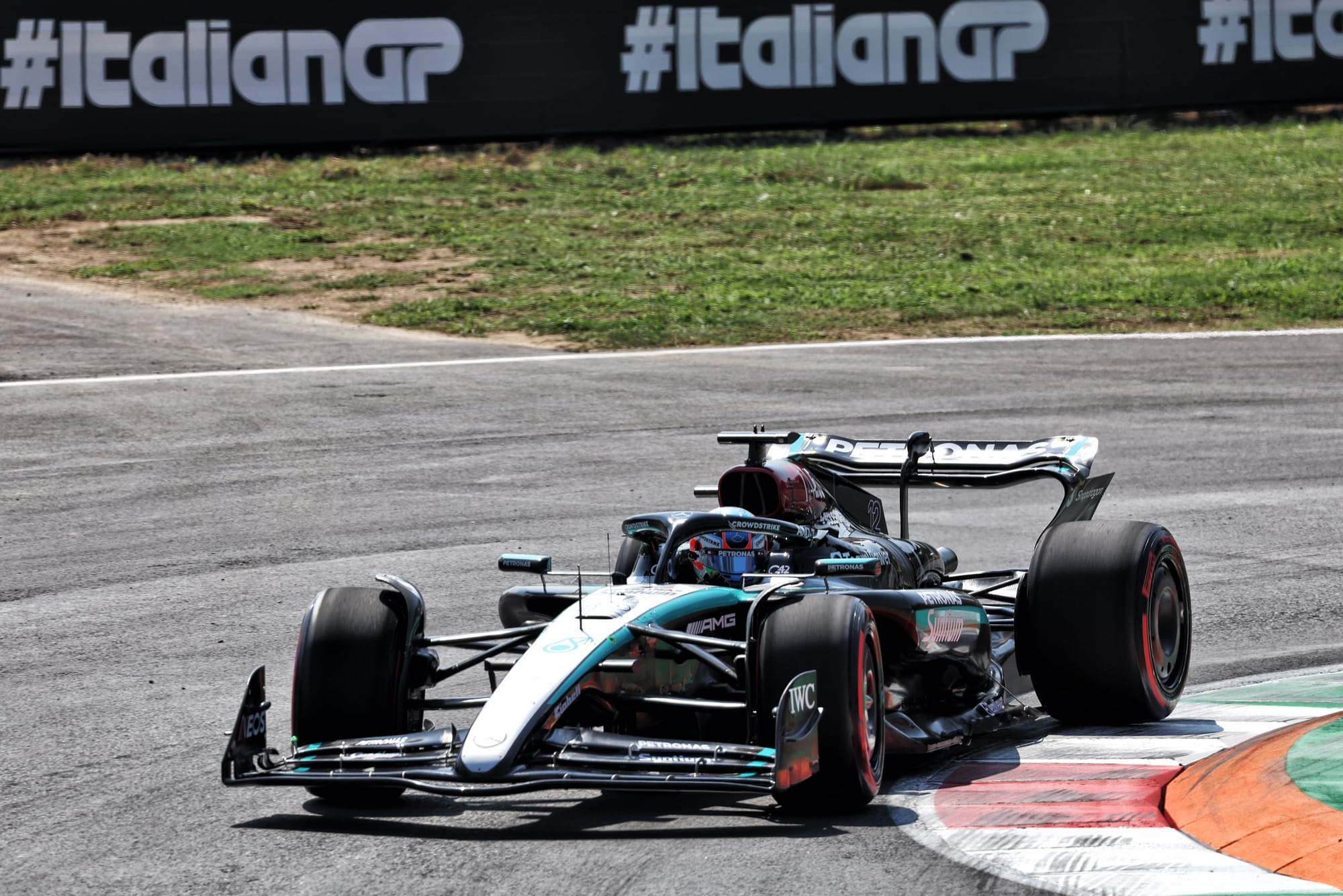
It would be easy to advocate a conservative approach but how much restraint can you ask of a driver on such a steep learning curve? How beneficial can driving at a reduced percentage really be in his situation? It's a fine line to balance. And, so long as it doesn’t get stupidly reckless, or destroy his confidence, he can always rein it in.
“I’d rather slow somebody down than make somebody fast because the second one is impossible,” said Wolff.
If a Mercedes F1 race seat is to be Antonelli’s destination next year, and it looks as though it will, these opportunities matter more than normal. There are limited chances for Antonelli to add to his data bank before 2025, and FP1 outings aren’t box-ticking exercises where he’s concerned, they are real-world, live on-track training sessions.
That doesn't excuse such a big, early crash, and he'll need to exhibit better judgement in the future. Antonelli is too good and too switched on not to learn from it - he'll discover what he got wrong, and why, how tyres he has never driven before (because his 2022 car testing has been done with a different, not quite representative, compound range), and how he needs to react next time the car does something he doesn't expect.
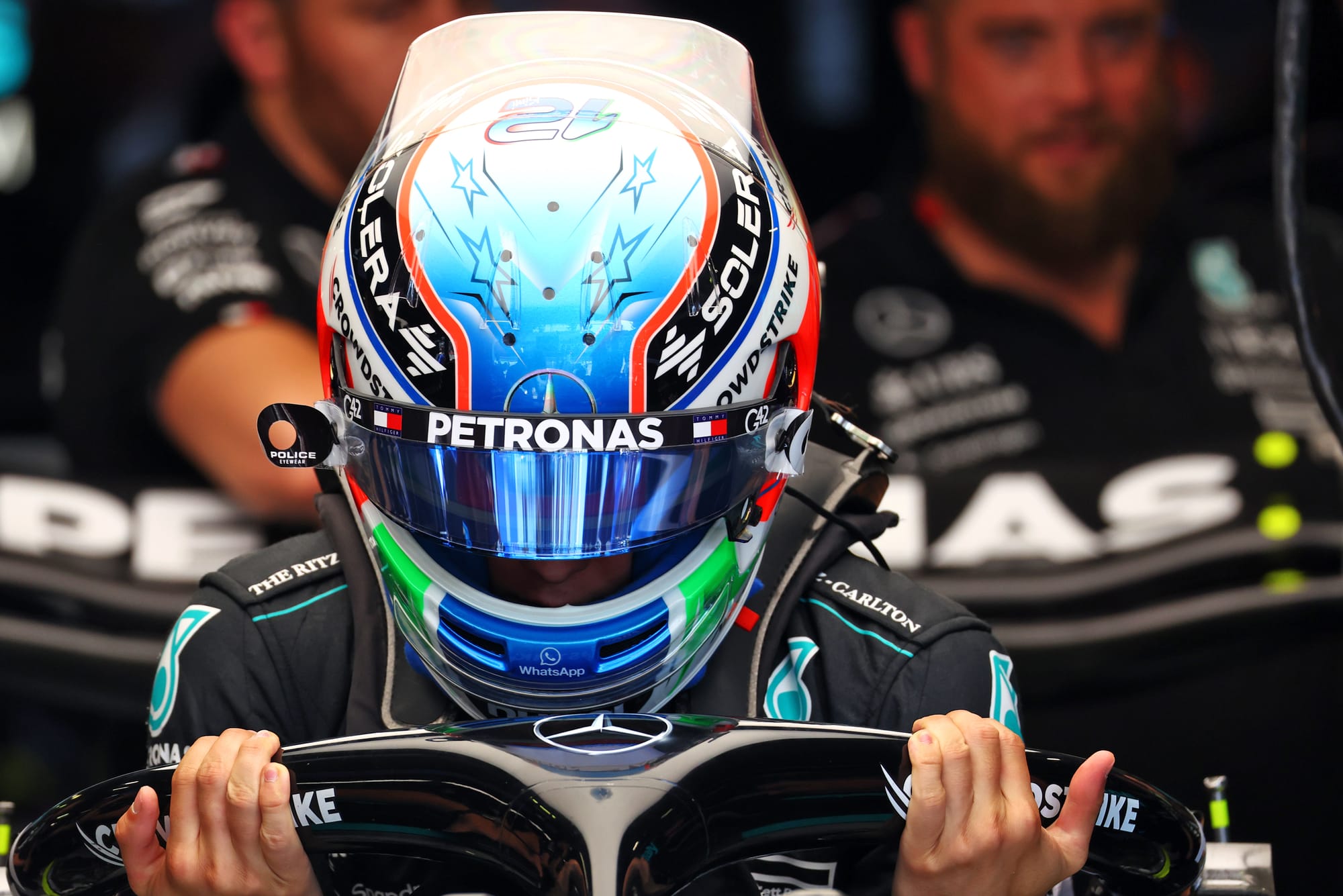
“A strong driver needs to recover from these things and cope with the pressure,” said Wolff.
“This weekend wasn’t easy because he still needs to compete in F2 [at Monza as well].
“You have all these shenanigans around you at Monza, Italian kid that’s being hyped, first time in a Mercedes. And that must be a heavy burden.
“But if he wants to be a champion he needs to cope with that. I have no doubt he can and he will.”


